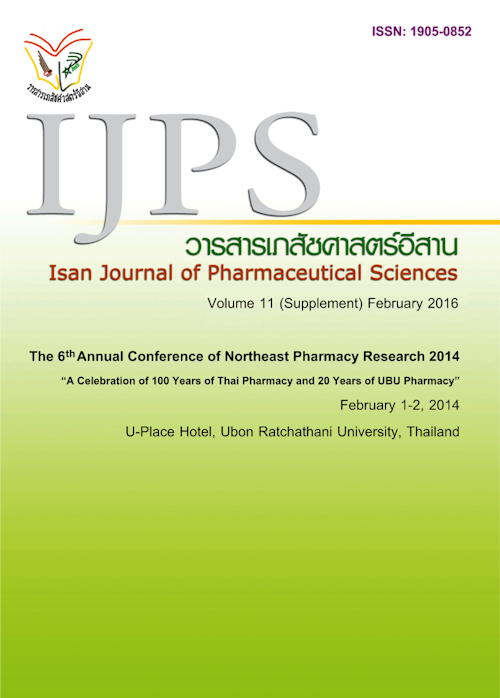Smoking Cessation of Parent with Pediatric Asthma Patient, KhonKaen Hospital
Main Article Content
Abstract
Introduction: Asthma is a chronic lung disease which affects on health and quality of life. Some patients had to admit into hospital and some are death. Most of them had uncontrolled symptom because they always exposed to trigger factors such as cigarette smoke from their relatives or parents which are the major risk of this disease. Thus, this study aimed to determine smoking cessation of parents with asthma children who had the desire to quit smoking. Materials and Method: Parents of asthma children were asked to quit smoking and firstly be screened baseline with the Fagerstrom test, amount of carbon monoxide in the lung, percentage of peak expiratory flow rate and determine their nicotine dependence. Then, all of them were followed up by telephone and made a evaluator visit at drug store or hospital and recorded the data in week 1, 2, 4, 8, 16, 24, respectively. Results: All of 20 parents of pediatric asthma patient were male and aged 25-71 years old. Most of them decided to quit smoking due to their family, health and social need of 6 (30%), 10 (50%) and 1 (5%), respectively. An average cigarette number was 16 rolls per day. For nicotine dependence, we found 8 (40%) persons, 3 (15%) persons in mind addiction and 9 (45%) persons addicted from social environment. Fagerstrom scores have shown that most of parents or 11 (55%) persons had low score, 8 (40%) persons had average score and found only one person with high score. Amount of carbon monoxide in the lung had score during 1-31 ppm and percentage of peak expiratory flow rate less than 80% found in 5 (25%) persons. After follow up at week 24, 14 (70%) parents can quit smoking, 3 (15%) parents can reduce the number of cigarette per day from their baseline and 3 (15%) parents were unable to follow up their smoking since they have changed telephone number or loss from the follow up visit. For amount of carbon monoxide in the lung and percentage of peak expiratory flow rate, they showed the better value in all patients who can reduce the number of cigarette smoking. Conclusion: Parents of asthma children, who had the compliance to pediatric asthma clinic and follow up visit, mostly have an experience to succeed in smoking cessation. Special counseling such as nicotine replacement therapy and initiation of inspiration to quit smoking in parents of pediatric asthma clinic were needed.
Article Details
In the case that some parts are used by others The author must Confirm that obtaining permission to use some of the original authors. And must attach evidence That the permission has been included


